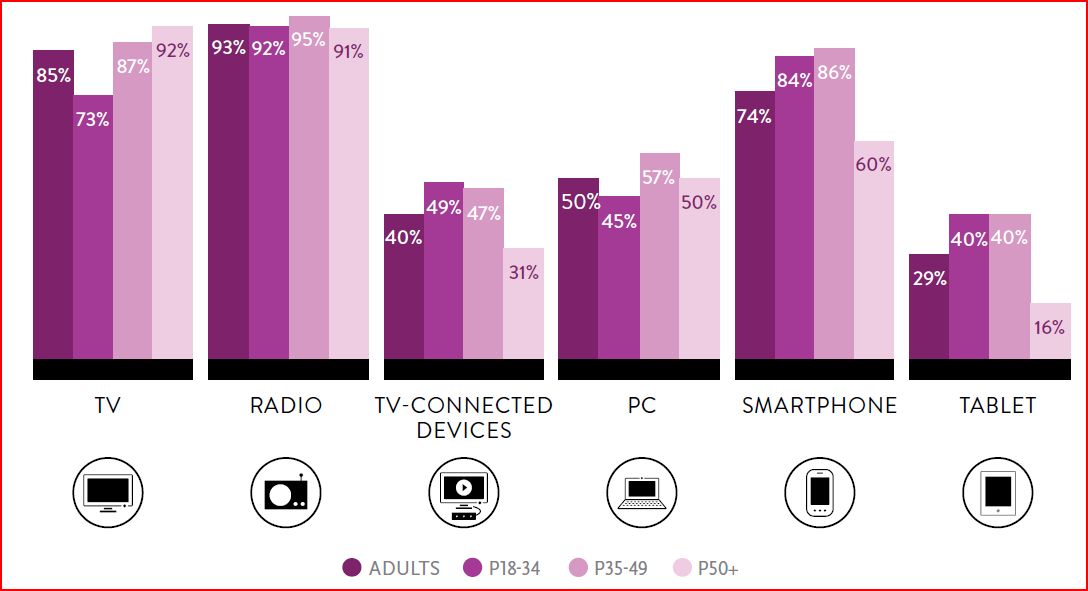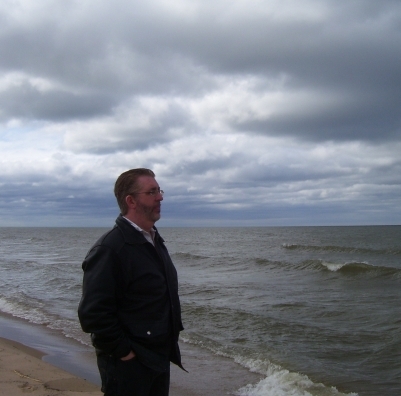by Scott Howard | Nov 7, 2016 | Marketing and Advertising Insights, The Not-So-Secret Writings of ScLoHo, WOWO Fort Wayne Radio Advertising with Scott Howard
Over the next 5 weeks, I am sharing the 5 most shared articles I’ve published in the past 12 months like this one from March 2016:
It comes as no surprise to me, but maybe some of my friends in the advertising industry will have their eyes opened by this chart:

A report came out last month that was conducted to determine how we as consumers of media, get the media we consume.
Radio now beats television according to this data. WOWO radio in Fort Wayne along with our sister stations are the dominate media in town and if you would like data on those specifics, contact me.
by Scott Howard | Jul 13, 2016 | Marketing and Advertising Insights, ScLoHo's Media, The Not-So-Secret Writings of ScLoHo
I’m just going to toss out a few items and you can fact check them if you want because I’m not going to hyperlink the sources, there’s too many and I’m sort of busy these days.
I want you to answer a question… that question is what are you doing differently?
If you are using the same media mix to advertise that you were using in 2013, you need to re-evaluate. Some of the media platforms you’ve been using have lost viewers/readers/listeners. Other media platforms that were just getting started back then have become worthy of consideration.
Think about that pocket computer known as your phone. Every 18 months the technology capabilities of our computers doubles. The phone you got for Christmas, 2014 is old, broken, out of date, or you’ve already replaced it.
As I was writing this piece last week, I was using 3 screens. My laptop, my phone and I was watching America’s Got Talent on the flat screen in our family room.
A few days ago I was watching a TV show on Amazon Prime, streamed from my laptop to another TV via my Chromecast.
Every day I hop in my car and listen to at least 4 different radio stations. Besides listening as I drive, I sometimes hear a radio station when I stop to pick up my breakfast and I also sometime listen to the streaming of my favorite stations by plugging earbuds into my laptop as I have my afternoon coffee.
I don’t remember the last time I bought the local newspaper, or any newspaper for that matter. I have read stories from the papers, but it’s because I get a link on Twitter or Facebook that captures my attention and I click and read.
Those are some of the media habits I live every week in the summer of 2016. Some I’ve been doing for years, others for just months.
What about you? What is different about your media habits compared to a few years ago?
Your customers have changed some of their media habits over the years too. My question for you is have you changed your media mix to take advantage of the changes that are going on all around us?
What are you doing differently? If you want help figuring this out so your business can make money, contact me so we can talk.
by Scott Howard | Nov 12, 2015 | Marketing and Advertising Insights, WOWO Fort Wayne Radio Advertising with Scott Howard
Sometimes it is hard to convey to others what I do for a living. But I’ll lay it out plain and simple:
I’m here to help you with your marketing, advertising and a few other things too.
I earn my money, the stuff that shows up in my checking account briefly before it travels to the mortgage company and others, working for Federated Media in Fort Wayne, Indiana. I sell advertising campaigns and marketing solutions. The primary radio station I do this with is legendary 1190am WOWO radio. Our local ESPN station at 1380am is also a station I can help you with. Plus we have several music stations in Fort Wayne operated by Federated Media that I can connect you with the appropriate sales staff for including WMEE, K-105, and The Bear.
I also have a whole bunch of resources that don’t involve radio ads. Federated Digital Solutions is part of Federated Media and so is Federated Entertainment. I’ve worked hand in hand with both of these divisions to help businesses connect with new customers.
I structure my time so I am available to offer help and ideas to nearly anyone, not just people who pay me or my company. This year I began the process of helping a business that has been around for nearly 70 years make sense out of how to spend their marketing money. It turns out they will spend some with me, but more important is they are going to make smart marketing and advertising choices, following a plan that involves all kinds of things I can’t sell them.
Every week I meet with at least one or more people that I will never sell anything to. Selling is not my purpose. Helping is.
I volunteer with a few organizations too. If I can help and they want my help, I have allocated time in my life to do just that.
Back when Google Voice was introduced in 2009 and 2010, I signed up.  As an early adopter, I was able to pick my own number. I picked the number 260-255-4357 because those last 4 digits spell HELP. I tell people my phone number is 255-HELP. I am here to help. Period.
As an early adopter, I was able to pick my own number. I picked the number 260-255-4357 because those last 4 digits spell HELP. I tell people my phone number is 255-HELP. I am here to help. Period.
What I won’t do:
- Directly lend you money, unless you are my wife
- Help you do anything illegal or immoral
- Con you, trick you, or deceive you
And I promise to make mistakes because we’re all human. But I’ll own up to it and do what needs to be done when something like that happens.
My area of expertise is media, marketing and advertising. I believe in applying human relationship principles to marketing because it is easier to go with the flow and works so much better. I work in Fort Wayne and the surrounding area but have friends all over the world including New Zealand.
I also write and publish on this website 5 days a week. You can subscribe if you wish to get updates in your email.
What can I help you with?

by Scott Howard | Dec 5, 2011 | Really? The Personal ScLoHo
I voluntarily quit my job earlier this year.
I worked for the same group of radio stations since 2003.
That’s before Facebook.
I actually worked in and on the radio for more than 20 years.
But times were changing.
And they still are changing.
Radio is still being listened to, but unless something significant happens to take advantage of our current media world, I believe it’s not a long term career path for someone starting out.
Seth Godin explains this media shift:
Since the invention of media (the book, the record, the movie…), there’s been a pyramid of value and pricing delivered by those that create it:

Starting from the bottom:
Free content is delivered to anyone who is willing to consume it, usually as a way of engaging attention and leading to sales of content down the road. This is the movie trailer, the guest on Oprah, the free chapter, the tweets highlighting big ideas.
Mass content is the inevitable result of a medium where the cost of making copies is inexpensive. So you get books for $20, movie tickets for $8 and newspapers for pocket change. Mass content has been the engine of popular culture for a century.
Limited content is something rare, and thus more expensive. It’s the ticket that everyone can’t possibly buy. This is a seat in a Broadway theater, attendance at a small seminar or a signed lithograph.
And finally, there’s bespoke content. This is the truly expensive, truly limited performance. A unique painting, or hiring a singer to appear at an event.
Three things just happened:
A. Almost anyone can now publish almost anything. You can publish a book with out a publisher, record a song without a label, host a seminar without a seminar company, sell your art without a gallery. This leads to an explosion of choice. (Or from the point of view of the media producer, an explosion of clutter and competition).
B. Because of A, attention is worth more than ever before. The single gating factor for almost all success in media is, “do people know enough about it to choose to buy something?”
C. The marginal cost of one more copy in the digital world is precisely zero. One more viewer on YouTube, one more listener to your MP3, one more blog reader–they cost the producer nothing to produce or deliver.
As a result of these three factors, there’s a huge sucking sound, and that’s the erosion of mass as part of the media model. Fewer people buying movie tickets and hardcover books, more people engaging in free media.
Overlooked in all the handwringing is a rise in the willingness of some consumers (true fans) to move up the pyramid and engage in limited works. Is this enough to replace the money that’s not being spent on mass? Of course not. But no one said it was fair.
By head count, just about everyone who works in the media industry is in the business of formalizing, reproducing, distributing, marketing and selling copies of the original creative work to the masses. The creators aren’t going to go away–they have no choice but to create. The infrastructure around monetizing work that used to have a marginal cost but no longer does is in for a radical shift, though.
Media projects of the future will be cheaper to build, faster to market, less staffed with expensive marketers and more focused on creating free media that earns enough attention to pay for itself with limited patronage.




